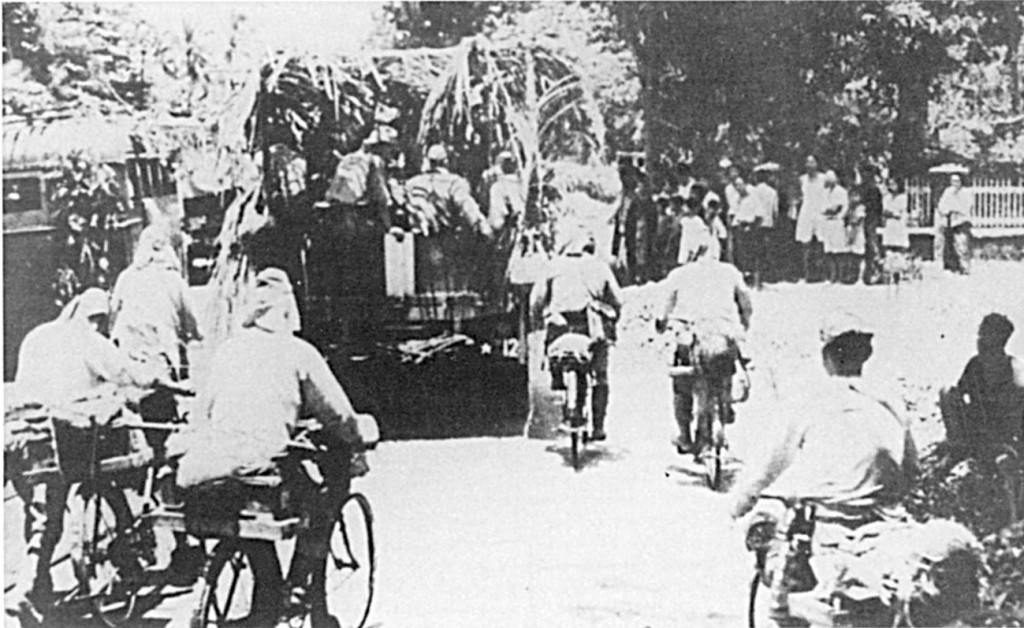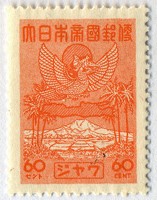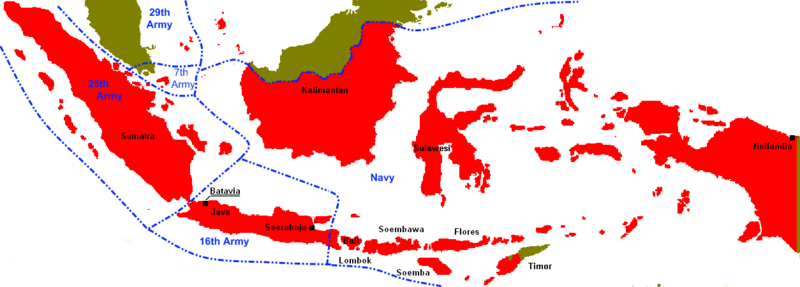ALBUM – view my Japanese Occupation of Java album
Fast Facts
Region: Far East
Group: Dutch Indies
Classification: Japanese Occupations
Prior Regime: Netherlands Indies
Key Dates:
1940, May 15 – Nazi Germany Invades and Occupies the Netherlands
1942, Jan 8 – The Netherlands declare war on Japan
1942, Jan 10 – Japan begins the invasion of the Dutch Indies
1942, Mar 8 – Japanese invasion complete as the Dutch surrender
1945, Aug 15 – Japanese surrender to the Allies
Following Regime: Civil War for Independence
Scott Catalogue: Netherlands Indies N1-N14
Pick Catalogue: Netherlands Indies 119-133
History

The Netherlands Indies (modern day Indonesia) was formally established as a Dutch Colony in 1800 when it took the islands from the Dutch East India Company. Over the years, the resource rich colony expanded and flourished, but typical with colonial systems, the local population were exploited by their rulers. The colony, spread over more than tens thousand islands often experienced rebellions and resistance to colonial rule.
Far to the north of the colony, the every expanding Japanese Empire was advancing on the Chinese Mainland. Eventually, World War 2 broke out in the pacific as Japan attacked Pearl Harbor and other Allied ports in the Pacific in Dec, 1941. The Netherlands declared war on Japan on Dec 8th, shortly after those attacks. The Netherlands, ruled by a government in exile in London, was already under Nazi occupation in Europe. Continuing to the south, the Japanese invasion of the Dutch Indies began on Jan 10th, 1942 on Borneo. Dutch forces in the Indies along with the Americans, British, and Australians, were unable to hold back the Japanese war machine, and eventually surrendered on March 8th, 1942.
Initially, the Japanese were seen as potential liberators by the local population, as Sukarno, a popular Indonesian nationalist leader supported the Japanese occupation. However, the Indonesians soon discovered that Japanese rule was even harsher, as many were conscripted into forced labor while food and materials were shipped off of the islands to support the war effort. Additionally, more than 100,000 European, Chinese and other western people were held in internment camps, where many eventually died of starvation.
During the occupation, the Japanese divided the colony into three separate regions. Java, administered by the Japanese 16th army, Sumatra administered by the Japanese 25th army, and the outer islands called Borneo and the Greater East which was administered by the Japanese navy.
In Java, the most industrialized island, the Japanese were generally tolerant, within limits, of political activities carried out by nationalists and Muslims. However, they were still brutal against the local population. Food and vital materials were taken by the Japanese causing widespread starvation among the Indonesians. Forced conscription of millions of locals to work in defense related projects. Many of the laborers (romusha), were also sent to the outer islands and other Japanese occupied regions to work on various wartime construction projects.
In the last few months of the war, the Japanese promoted the independence moment, to frustrate the ability of the Allies to re-occupy the islands. Eventually, the Japanese surrendered to the allies on August, 15, 1945, but Sukarno immediately declared an independent Indonesia. This resulted in a 4 year civil war against the Dutch, eventually, leading to an independent Indonesia, established in 1949.
Stamps
 ALBUM
ALBUM
During the occupation, the Japanese divided the colony into three separate regions. Java, Sumatra, and the outer islands called Borneo and the Greater East. Each ran their own postal authorities and issued their own stamps. For the first year of occupation, Netherlands Indies stamps, except those featuring Queen Wilhelmina, were used.
On March, 9th, 1943, the Japanese issued set of 4 stamps to commemorate the first anniversary of the surrender of the Dutch to the Japanese. Each of the four stamps featured a different design. One was a map of the Japanese Empire and the others depicted various scenes in the life of Java.
Shortly thereafter, on March 20th, a second set of 2 stamps were issued to commemorate the milestone of reaching 5 million guilder in the Postal Savings Bank.
From 1943-1944, a set of 8 additional definitive stamps, featuring images around Java, were issued.
Banknotes
While postal authorities and administration differed during the Japanese occupation, the control of banking and currency was much more centralized. After the occupation was complete, Japanese authorities liquidated all of the banks and voided all debts. New banknotes, inscribed “Japansche Regeering”, or Japanese Government were printed and issued by the Japanese government beginning March, 1942. The new notes denominated from 1 cent to 10 gulden were expected to be exchanged 1:1 with the former Dutch currency.
While the goal of the Japanese was to over time replace the Dutch Indies currency, pre-occupation currency remained as legal currency. It soon became apparent that the invaders printed far too much currency, causing rampant inflation of the Japanese currency. As a result, people hoarded the Dutch Indies currency, and replacement never happened.
Two years into the occupation, the Japanese began to encourage the growth of Indonesian nationalism, because they believed that local government was in their own strategic interests. In 1944, the Japanese issued a second set of notes in Javanese and printed in Java which was denominated in Roepiah. The notes ranged from 1 – 10 roepiah.
Links
Indonesia Digest – Netherlands Indies (check out all five pages)
The Dutch East Indies Campaign (1941-42)
Video – the Battle for Java, 1942
Video – The Japanese Invasion of Indonesia, 1942- Tempo Doeloe
Dai Nippon, Stamps of the Japanese Occupation of Java
Banknotes of the Netherlands Indies at ATS Notes
DJB during the Japanese Occupation (1942-1945)
Japanese Government Isssued Currency in the Netherlands Indies from Wikipedia
Japanese Invasion Currency Printed in Australia





